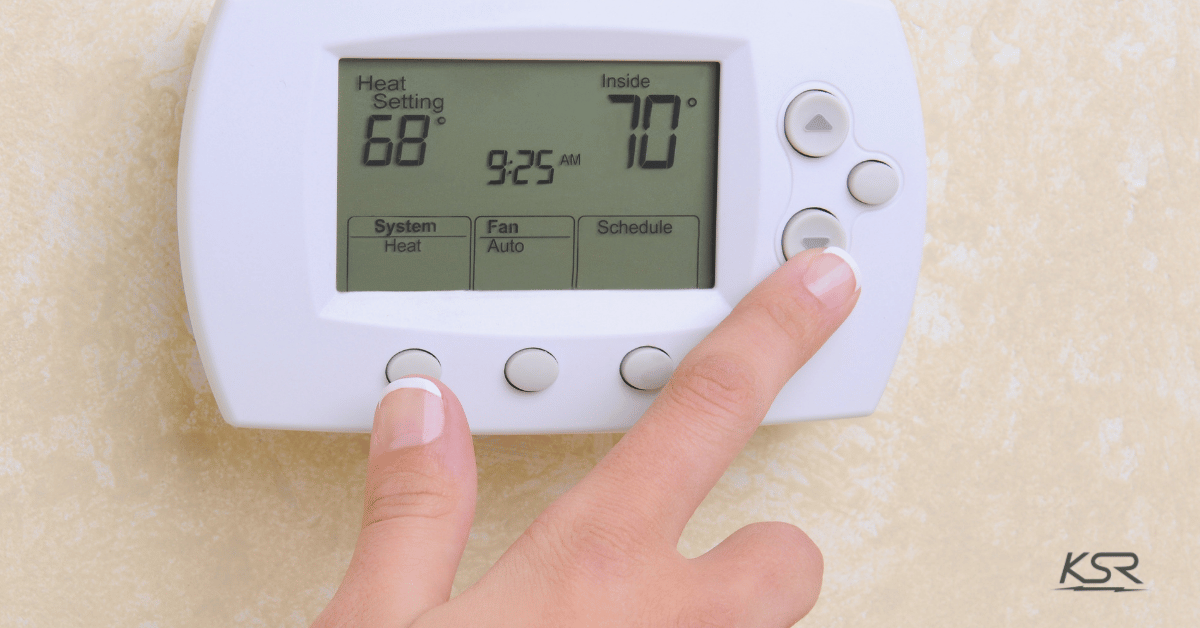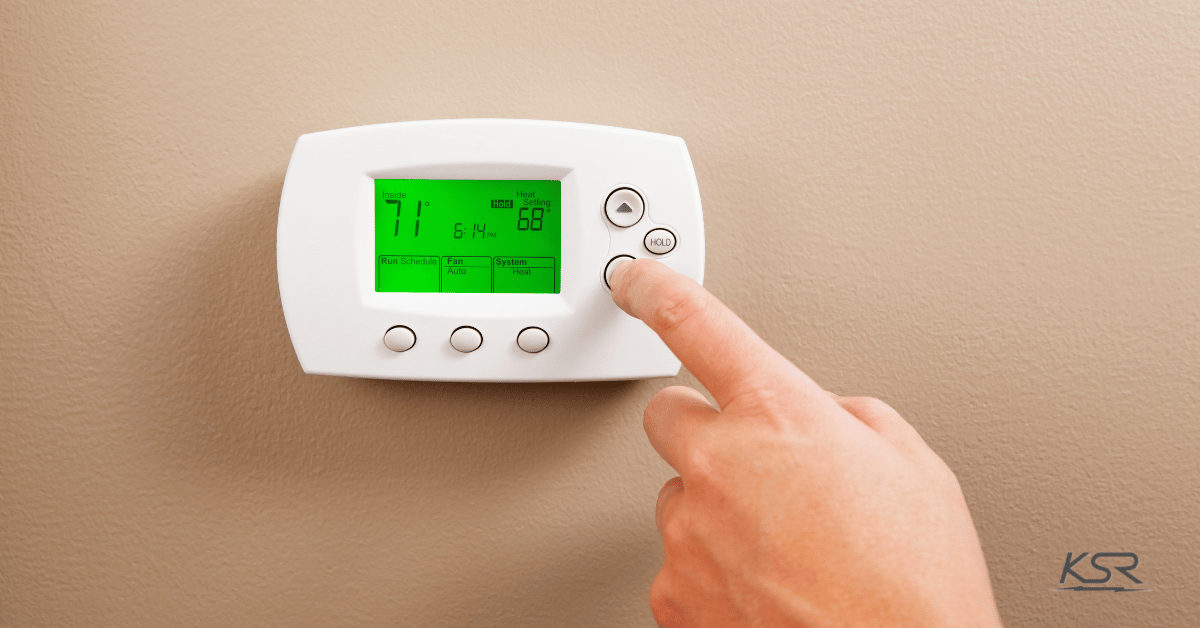Best Thermostat Setting: As the temperatures dip in Central Illinois, one question starts popping up in every household: “What’s the best thermostat setting for my furnace?” The answer depends on your comfort preferences, schedule, insulation, and who lives in your home.
At KSR HVAC & Electrical, we’ve helped homeowners and businesses across Minonk and surrounding areas set the thermostat for both comfort and energy efficiency. Let’s break down how you can set your thermostat to maintain warmth, avoid costly repairs, and lower your energy bill without sacrificing comfort.
Why Your Thermostat Setting Matters
Best Thermostat Setting: Your thermostat acts like a traffic controller for your heating system. If you set the thermostat too high, your furnace works overtime. If you lower the temperature too much, you might need extra blankets.
Poor thermostat settings can lead to:
- Higher energy costs and heating and cooling expenses
- Inconsistent home temperature
- Extra wear on your HVAC system and furnace, leading to more frequent repair or installation needs
- Discomfort for kids, seniors, or pets
The goal isn’t just to stay warm it’s to maintain a comfortable temperature efficiently.
Recommended Thermostat Settings by Season
Best Thermostat Setting: Different seasons require different temperature settings to balance comfort and energy savings.
Winter Thermostat Settings
- When You’re at Home and Awake: Set your thermostat around 68°F (20°C). This ideal thermostat temperature offers comfort while helping to save energy.
- While Sleeping or Away: Lower your thermostat by 7–10 degrees. According to the Department of Energy, this can save as much as 10% on heating and cooling costs.
- Vacation Mode: Keep your heater temperature at 55°F (13°C) or higher to prevent frozen pipes.
Spring and Fall
- Keep your thermostat setting between 65–68°F depending on the day’s weather.
- Use natural ventilation or ceiling fans to cool your home without overusing the air conditioner.

Should Every Home Use the Same Thermostat Setting?
Best Thermostat Setting: Not necessarily. The temperature to set your thermostat can depend on lifestyle, health needs, and pets.
Homes with Infants, Elderly, or Health Conditions
- Maintain a comfortable indoor temperature between 69–72°F.
- Monitor with a room thermometer.
Allergy or Asthma Concerns
- Combine a steady thermostat setting with proper air filtration.
- Avoid frequent adjusting the temperature to reduce moisture issues.
Pet Owners
- Most pets are fine between 60–72°F.
- Older or short-haired pets may prefer a slightly warmer temperature setting.
Types of Thermostats and How They Affect Settings
The type of thermostat you use can impact your energy efficiency and comfort.
- Manual Thermostat
- Requires frequent manual changes.
- Less energy saving potential.
- Programmable Thermostat
- Allows you to schedule heating and cooling changes automatically.
- Great for home and away schedules.
- Smart Thermostat
- Learns your habits and adjusts automatically.
- Can be controlled remotely to help you save money.
- Often improves energy efficiency in your home.
If you’re still on a manual thermostat, upgrading to a smart or programmable thermostat is generally recommended to save energy and improve comfort.

Signs You Might Have the Wrong Thermostat Setting
Watch for these indicators that you need to adjust your thermostat:
- Stuffy or overly cold rooms even when the thermostat is set
- Furnace cycling too often or running continuously
- Sudden spike in energy bills
- Family constantly changing the thermostat
If these happen, it might mean your thermostat needs recalibration, cleaning, or replacement.
Easy Tips to Stay Warm Without Raising the Thermostat
- Wear warm layers indoors.
- Seal drafty areas to reduce heating and cooling costs.
- Reverse ceiling fans to push warm air down.
- Use curtains to trap heat at night.
- Schedule furnace cleaning, repair, and installation checkups before winter.
What We Recommend at KSR HVAC & Electrical
For most Central Illinois homes:
- Keep 68°F as the winter thermostat setting when you’re at home.
- Lower it by 7–10 degrees when you’re asleep or you’re away from home.
- Use a programmable thermostat or smart thermostat for the best control.
- Pair your furnace with IAQ products for better comfort and energy efficiency.
- Book annual furnace maintenance to extend lifespan and avoid costly repair.
We install and service Daikin, Amana, and Goodman equipment, including HVAC thermostats, ensuring comfort and energy efficiency all year.

Final Thoughts: Small Changes, Big Results
Finding the best thermostat setting is about comfort and energy savings. With proper recommended thermostat settings and the right programmable thermostat, you can reduce energy consumption, extend the life of your furnace, and lower your energy bill.
At KSR HVAC & Electrical, we’re here for all your thermostat, heating, cooling, and IAQ needs from installation to repair to seasonal cleaning.
Frequently Asked Questions
Q: What’s the most efficient temperature to set my furnace in winter?
A: 68°F is generally recommended when you’re at home and awake. Lower it when sleeping or you’re away from home.
Q: Can turning the thermostat higher heat my home any faster?
A: No your furnace won’t heat faster; it just wastes energy and money.
Q: Will a smart thermostat save you money?
A: Yes, especially if you often forget to set the thermostat.
Q: Should I turn my furnace off completely when away?
A: No. Maintain at least 55°F to protect pipes.









